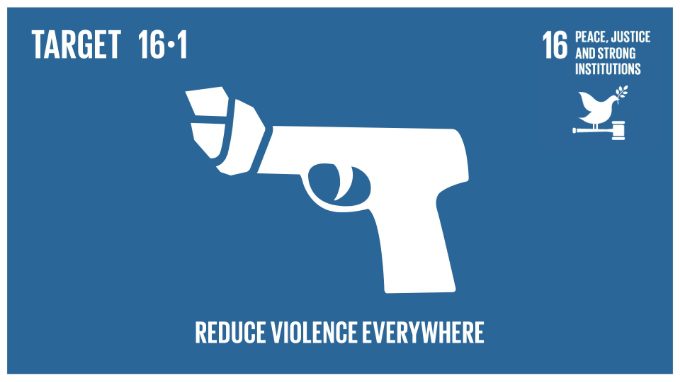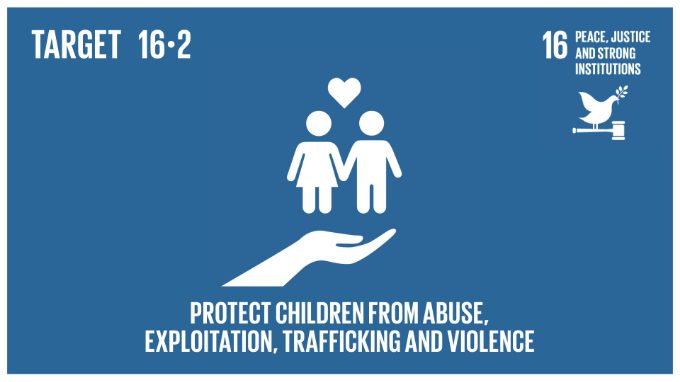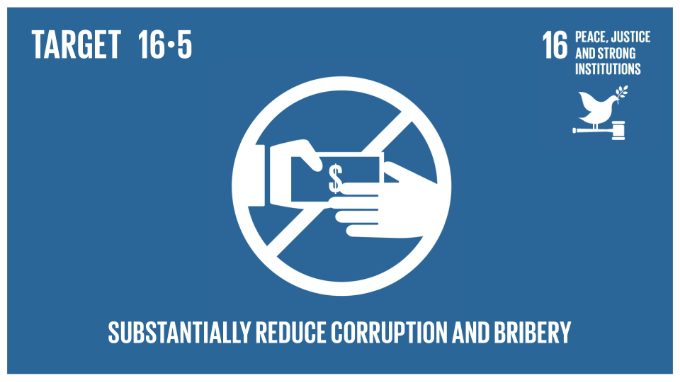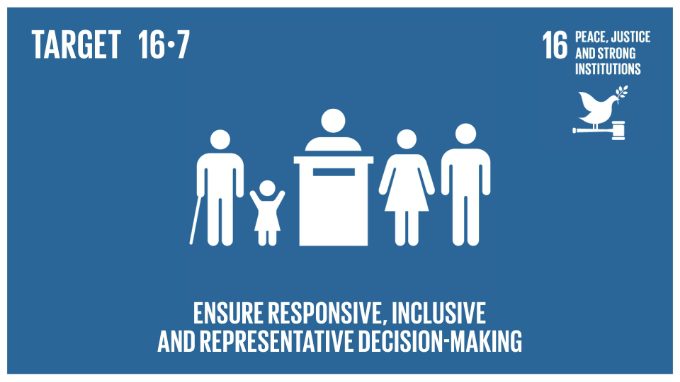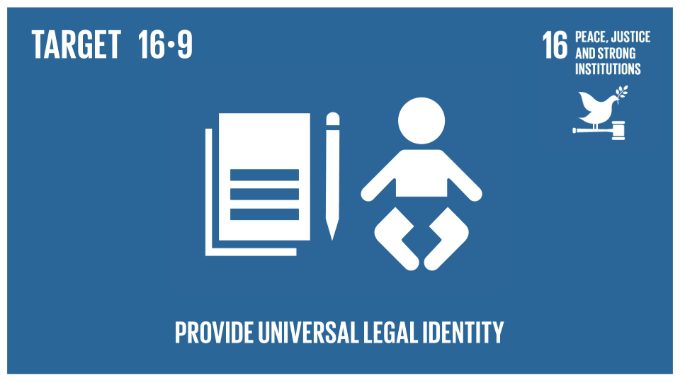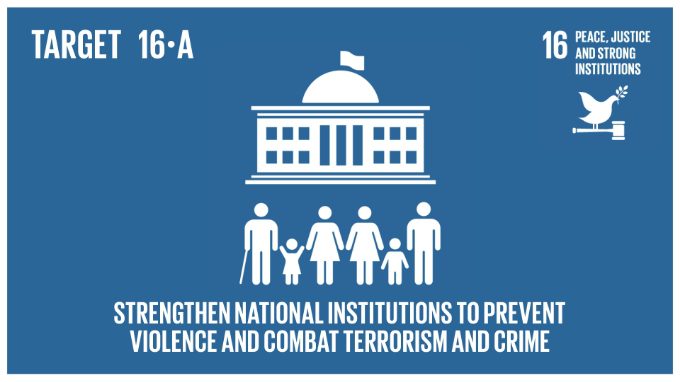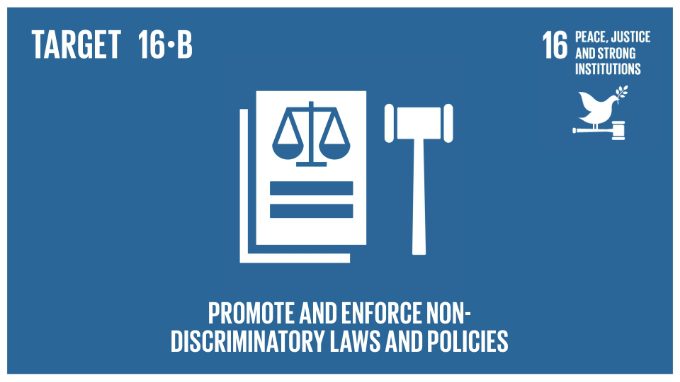Overview:
Compassion and a strong moral compass is essential to every democratic society.Yet, persecution, injustice and abuse still runs rampant and is tearing at the very fabric of civilization. We must ensure that we have strong institutions, global standards of justice, and a commitment to peace everywhere.
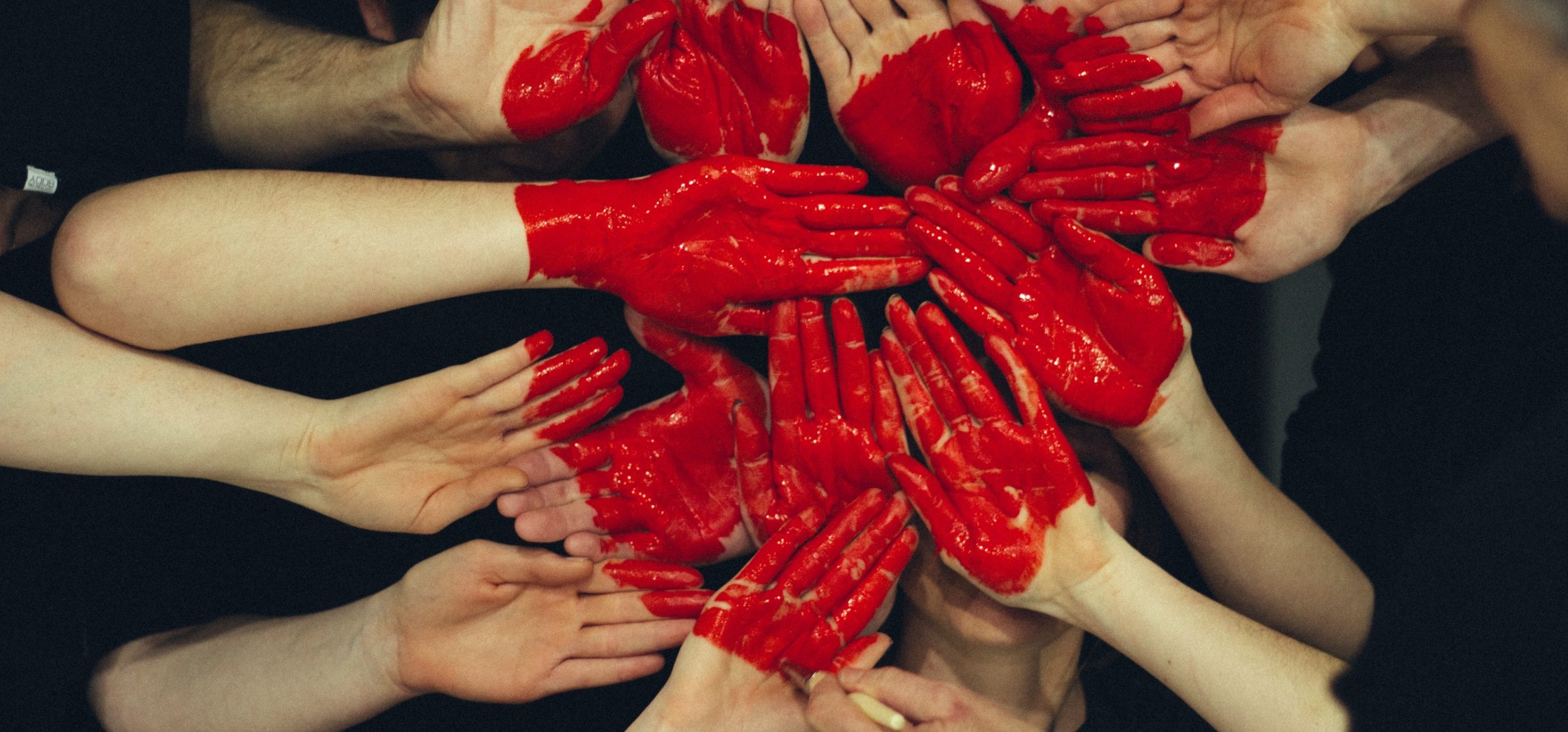
International Progress 2023:
Ongoing and new violent conflicts around the world are derailing a global path to peace and achievement of SDG 16. One quarter of humanity lives in conflict-affected areas and as of May 2022, a record 100 million people had been forcibly displaced worldwide—more than double the number a decade ago. Citizens also face challenges accessing justice, basic services/legal guarantees and are generally underrepresented due to ineffective institutions. Moreover, structural injustices, inequalities and emerging human rights challenges are putting peaceful and inclusive societies further out of reach. To meet SDG16 by 2030, action is needed to restore trust and to strengthen the capacity of institutions to secure justice for all and facilitate transitions to drive sustainable development.
Globally, about 457,000 people were victims of homicide in 2021— the highest number of victims in the last 20 years. The noticeable spike in killings in 2021 can be partly attributed to the economic repercussions of COVID-related restrictions, as well as an escalation of gang-related and socio-political violence in several countries. The homicide rate was 5.8 per 100,000 population, marginally lower than in 2015 (at 5.9 per 100,000). Men and boys represent about 80% of victims and 90% of suspects.
In 2022, the United Nations recorded 16,988 killings of civilians in armed conflicts: a 53% increase compared to 2021, and the first increase since the adoption of the 2030 Agenda. Four out of ten deaths occurred in Ukraine. One in five was a woman. The proportion of deaths by heavy weapons and explosive munitions increased significantly, from 13% in 2021 to 39% in 2022, in contrast to the steady decline over the previous five years.
Based on survey data from 114 countries, on average, approximately 69% of the population report feeling safe or very safe walking alone around the area in which they live after dark, a figure that has remained stable over the period 2016-2021. Women continue to feel significantly less safe than men.
In 75 countries (mostly low- and middle-income) with available data from 2014 to 2022, 8 in 10 children aged 1-14 years were subjected to some form of psychological aggression and/or physical punishment at home in the previous month. In 70 of these countries, at least half of children experience violent discipline on a regular basis.
In 2020, the number of trafficking victims detected worldwide fell for the first time in 20 years, as COVID-19 preventive measures changed the dynamics of exploitation while compromising anti-trafficking responses. As more victims are likely to remain undetected, increasing efforts are needed to tailor responses to the real prevalence of the crime.
For the period 2014-2021, only 55 countries (mostly low- and middleincome) have internationally comparable data on sexual violence in childhood against girls and only 12 have produced such data for boys. Across regions with representative estimates, the prevalence of sexual violence in childhood (by age 18) among young women aged 18–29 years ranges from 1% in Central and Southern Asia to 7% in Oceania (excluding Australia and New Zealand).
In 2021, the global prison population was 11.2 million, remaining relatively stable between 2015 and 2021, except for a temporary decline between 2019 and 2020. Some 3.4 million of all prisoners are unsentenced detainees and their share among all prisoners has remained at around 30% between 2015 and 2021 and far from the target of equal access to justice for all.
While tracing is a key measure in the process of investigating and disclosing the origins of illicit firearms, its systematic implementation remains a global challenge. On average, Member States with available data successfully traced one-third of seized weapons that are potentially traceable between 2016 and 2021.
Globally, approximately 1 in 7 (15%) businesses face requests for bribe payments by public officials, based on establishment-level data from 154 countries surveyed during 2006-2023.
Multiple crises undermine budget credibility across all regions. The average budget deviations compared to the approved budget decreased from 5- 10% in 2015 to the target of less than 5% in 2019. However, budget credibility deteriorated and reached a deviation of almost 10% for some regions in 2020 – 2021.
In every region of the world except Europe, people under the age of 45 are significantly underrepresented in parliament relative to their share of the national populations.
By providing all children with proof of legal identity from day one, their rights can be protected and universal access to justice and social services can be enabled. In 2022 the births of around 1 in 4 children under age 5 worldwide have never been officially recorded. Only half of the children under five years of age in sub-Saharan Africa have had their births registered.
Access to information (ATI) laws provide legal guarantees of the right to information and were adopted by 136 countries in 2022, up from 105 in 2015.
Source: Progress towards the Sustainable Development Goals: Towards a Rescue Plan for People and Planet – Report of the Secretary-General (Special Edition)
Ireland’s
Progress 2023:
Ireland has not reached 100% of the population using at least basic sanitation services and having basic drinking water services. Many of our imports contribute to water scarcity. In Ireland all water policy and management is guided by the Water Framework Directive. Under this directive Ireland has been set a target of achieving at least ‘good status’ for all waters in the country, along with no deterioration. Despite a lot of good work over the last 20-30 years we are falling short in achieving this target and water quality has declined in recent years.
The water quality at half (50%) of the monitored river water bodies in Ireland is categorised as being at ‘good’ and ‘high’ ecological status. The remaining half are at less than good (50%). Almost one fifth (18.5%) of monitored river water bodies are in poor or bad status and are severely polluted. The key issue is eutrophication, driven by excess phosphorus in freshwaters and excess nitrogen in estuarine and marine waters. Changes to the physical habitat including excess sediment (hydro morphology) are the next biggest issue. Agriculture is the most significant pressure, followed by urban discharges, channel maintenance and other physical habitat changes, forestry, peat cutting and domestic wastewater. Diffuse pollution is widespread and presents the greatest challenge. At the current level of progress, Ireland will fail to meet the EU and national goal of restoring all waters to good or better status by 2027. In 2022, 3 bathing waters were classified as ‘Poor’, up from two in 2021.
Targets —
-

Significantly reduce all forms of violence and related death rates everywhere.
CSO data
Status: Incidences increasing
16.1.1 The number of homicide offences fell by 37.5% between 2021 and 2022, falling from 64 to 40. There was an increase of 20.6% in the number of crimes classified as attempts/threats to murder, assaults, harassments and related offences compared to the previous 12 months. Kidnapping and related offences increased by 36.3% in the same period.
16.1.2 No data provided
16.1.3 The number of homicide offences fell by 37.5% between 2021 and 2022, falling from 64 to 40. There was an increase of 20.6% in the number of crimes classified as attempts/threats to murder, assaults, harassments and related offences compared to the previous 12 months. Kidnapping and related offences increased by 36.3% in the same period.
16.1.4 In Q3 2019, 75% of people aged 18 years and over said they felt “very safe” or “fairly safe”. This feeling of safety was considerably lower for females (64%) than for males (87%).
16.1.1
Number of victims of intentional homicide per 100,000 population, by sex and age
16.1.2
Conflict-related deaths per 100,000 population, by sex, age and cause
16.1.3
Proportion of population subjected to (a) physical violence, (b) psychological violence and (c) sexual violence in the previous 12 months
16.1.4
Proportion of people that feel safe walking alone around the area they live
-

Ensure public access to information and protect fundamental freedoms, in accordance with national legislation and international agreements.
CSO data
Claim: Achieving
16.10.1 The Irish Human Rights and Equality Commission Annual Report 2021 shows no incidence for Ireland.
16.10.2 The FOI Act 2014 was enacted on 14 October 2014.
16.10.1
Number of verified cases of killing, kidnapping, enforced disappearance, arbitrary detention and torture of journalists, associated media personnel, trade unionists and human rights advocates in the previous 12 months
16.10.2
Number of countries that adopt and implement constitutional, statutory and/or policy guarantees for public access to information
-

End abuse, exploitations, trafficking and all forms of violence against and torture of children.
CSO data
Status: Incidences increasing
16.2.1 21,186 referrals to Child Protection and Welfare Services during Q2 20221; 1,293 (6%) more than Q1 2022 (19,893) and the highest number for all quarters Q1 2021 – Q2 2022.
16.2.2 In Ireland, there were 44 victims of human trafficking identified by An Garda Síochána in 2021,an increase of 6 on 2020.
16.2.3 No data
16.2.1
Percentage of children aged 1-17 years who experienced any physical punishment and/or psychological aggression by caregivers in the past month
16.2.2
Number of victims of human trafficking per 100,000 population, by sex, age group and form of exploitation
16.2.3
Proportion of young women and men aged 18-29 years who experienced sexual violence by age 18
-

Promote the rule of law at the national and international levels and ensure equal access to justice for all.
CSO data
Status: Incidences of crime increasing
16.3.1 In 2019, 39% of victims of personal crime reported to An Garda Síochána.
16.3.2 In 2021, out of the total prison population of 3,806 some 2,956 persons were ‘under sentence’. The remaining 846 persons were ‘remand/trial’ prisoners, accounting for 22.2% of prisoners, compared to 739 or 19.4% in 2020.
16.3.3 The UN SDG Indicators Database provides the information.
16.3.1
Proportion of victims of violence in the previous 12 months who reported their victimization to competent authorities or other officially recognized conflict resolution mechanisms
16.3.2
Unsentenced detainees as a proportion of overall prison population
16.3.3
Proportion of the population who have experienced a dispute in the past two years and who accessed a formal or informal dispute resolution mechanism, by type of mechanism
-

By 2030, significantly reduce illicit financial and arms flows, strengthen the recovery and return of stolen assets and combat all forms of organized crime.
CSO data
Status: No data available
16.4.1 No data available at national level
16.4.2 No data available at national level
16.4.1
Total value of inward and outward illicit financial flows (in current United States dollars)
16.4.2
Proportion of seized, found or surrendered arms whose illicit origin or context has been traced or established by a competent authority in line with international instruments
-

Substantially reduce corruption and bribery in all their forms.
CSO data
Status: Incidences of bribery increasing
16.5.1 The World Bank Enterprise Survey data for Ireland shows that bribery incidences were only identified among medium size enterprises (20-99 employees), where 1.1% of medium size enterprises had bribery incidences, in 2020. In the service sector 0.5% of enterprises experienced bribery incidences in 2020, compared to none in the manufacturing sector.
16.5.1
Proportion of persons who had at least one contact with a public official and who paid a bribe to a public official, or were asked for a bribe by those public officials, during the previous
12 months16.5.2
Proportion of businesses that had at least one contact with a public official and that paid a bribe to a public official, or were asked for a bribe by those public officials during the previous 12 months
-

Develop effective, accountable and transparent institutions at all levels.
CSO data
Status: Issues around satisfaction with health care
16.6.1 Ireland’s current expenditure for 2023 is €78 billion.
16.6.2 In 2021, 16.1% respondents to a Satisfaction with Public Services survey were Not at all satisfied’ with the quality of the health system.
16.6.1
Primary government expenditures as a proportion of original approved budget, by sector (or by budget codes or similar)
16.6.2
Proportion of the population satisfied with their last experience of public services
-

Ensure responsive, inclusive, participatory and representative decision-making at all levels.
CSO data
Claim: Achieving
16.7.1 In the 2019 local elections saw a smaller increase of 3.8 percentage points in the number of seats taken by women, from 20.1% to 23.9%.
According to the Houses of the Oireachtas there were 531 candidates in the 2020 general election, of whom 162 were female. The introduction of gender quota legislation (i.e. quotas for women candidates) before the 2016 general elections did produce an increase of 6.5 percentage points in female representation in those elections, from 15.7% to 22.2%. 47.5% of public sector workers were female in 2016.16.7.1
Proportions of positions in national and local institutions, including (a) the legislatures; (b) the public service; and (c) the judiciary, compared to national distributions, by sex, age, persons with disabilities and population groups
16.7.2
Proportion of population who believe decision-making is inclusive and responsive, by sex, age, disability and population group
-

Broaden and strengthen the participation of developing countries in the institutions of global governance.
CSO data
Claim: Achieving
16.8.1 Ireland has voting rights in several international organisations.
16.8.1
Proportion of members and voting rights of developing countries in international organizations
-

By 2030, provide legal identity for all, including birth registration.
CSO data
Claim: Achieving
16.9.1 100% of births are registered in Ireland.
16.9.1
Proportion of children under 5 years of age whose births have been registered with a civil authority, by age
-

Strengthen relevant national institutions, including through international cooperation, for building capacity at all levels, in particular in developing countries, to prevent violence and combat terrorism and crime.
CSO data
Claim: Achieving
16.a.1 The Irish Human Rights and Equality Commission (IHREC) is Ireland’s national human rights and equality institution.
16.a.1
Existence of independent national human rights institutions in compliance with the Paris Principles
-

Promote and enforce non- discriminatory laws and policies for sustainable development.
CSO data
Status: Incidences increasing
16.b.1 In Q1 2019, just under one in five (18%) people aged 18 or over said they felt discriminated against in the two years before. The rate of discrimination reported by people who do not identify as LGBTI+ at 17.2% was nearly half the rate reported by those who do identify as LGBTI+ at 33.2%.
16.b.1
Proportion of population reporting having personally felt discriminated against or harassed in the previous 12 months on the basis of a ground of discrimination prohibited under international human rights law



